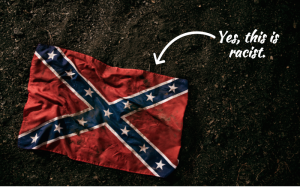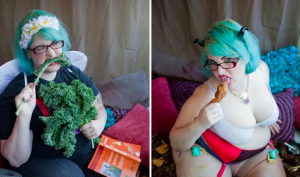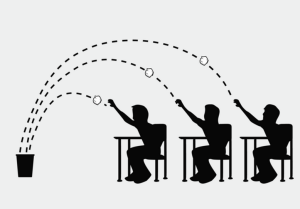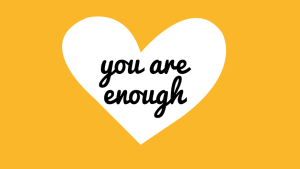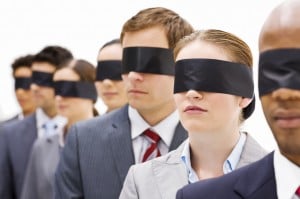This video is part of a series for Everyday Feminism, a website dedicated to helping you stand up to and break down everyday oppression.
Here is a question that feminists of color have been asking for decades: “Is feminism only for white women?”
Throughout history, many feminists have taken a one size fits all approach to ending sexism. Privileged feminists, in particular, have used sexism as the only spear of oppression, or at least the most pressing one that women face in society.
A recent example of this was Patricia Arquette’s speech at the Oscars where she stated, “To every women who gave birth, to every taxpayer and citizen of this nation, we have fought for everybody else’s equal rights. It’s our time to have wage equality once and for all and equal rights for women in the United States of America.”
I personally can very much get behind the idea of wage equality and equal rights for women. However, while this might seem like a fairly innocuous statement and her heart is clearly in the right place, her statements backstage make her speech all the more troubling.
Backstage, she stated, “It’s time for all the men that love women, and all the gay people, and all the people of color that we’ve all fought for to fight for us now.” So, lesbian women, bisexual women, and women of color aren’t women?
I think this quote expresses a very common sentiment shared by both feminists currently and throughout history. “All women” really only means privileged women.
When we only focus on sexism and situate it so that’s the only form of oppression relevant to women’s movements, we center our discussions around white, straight, cisgender, middle class, and able women. This completely disregards the unique experiences of women who are of color, members of the LBTQ community, working class, disabled, and/or otherwise marginalized.
For example when we speak of wage inequality as Patricia Arquette mentioned in her speech, women as a whole make 78% of what men make. However, this broad statistic doesn’t take into consideration the intersection of race and gender and brushes over the fact that women of color earn even less in comparison to white women.
According to the US Census Bureau, African American women earn 64% of what white men earn. Native American women earn 59%, and Latina women earn the least at 54%. In this case, as in most cases, women of color are experiencing more than just sexism. Their racial identity plays a huge factor in the way they experience inequality because they experience a combination of racism and sexism.
When I originally voiced my concerns about Arquette’s speech on social media, I received very similar comments to the ones I received when I critiqued Emma Watson’s UN speech. Like Arquette’s speech, Emma Watson’s He for She Campaign failed to account for her own privilege as a white upper class woman. It painted women’s issues with a broad brush that failed to account specific problems that only certain groups of women face.
When I articulated these concerns about both of these women’s speeches, I received numerous comments, mostly from white women, telling the that I should be happy that women were talking about these things in the first place. Basically, I should sit down and shut up because any breadcrumbs that women’s issues receive in the media should be gratefully received by all women even when they’re only representative of some women.
While this was frustrating, I realize that this reaction to women pointing out privilege within mainstream feminism is nothing new. Many women of color have been excluded from the movement since the very beginning making it all the more insidious when it continues to happen today. That’s why I think it’s important to look back on our past in order to inform our future and why it’s vital to center our discussions around marginalized women.
Unfortunately we don’t have time to explore it in depth, but feminism has a history of excluding or ignoring the issues of LBQ women, transgender women, women with disabilities, poor women, and immigrant women. So while this video won’t focus on these issues specifically, it’s important to note that feminism has a pretty bad track record of excluding women from all marginalized groups.
First, let’s take a brief walk through history to look at the ways feminism had dealt with the experiences of women of color and in most cases marginalized them from the mainstream movement. As famously stated by Sojourner Truth in her speech, Ain’t I a Woman, at the Women’s Rights Convention in 1851, “That man over there says that women need to be helped into carriages, lifted over ditches, and to have the best place everywhere. Huh, nobody ever helps me into carriages, or over mud puddles, or gives me any best place and ain’t I a woman?”
Before the term intersectionality was even invented, Truth acknowledges the way the intersection of race and gender affected her treatment as a female slave. She’s demoted to second class status as a woman, but is denied many of the privileges that white women were given because of her racial status.
White women were seen as fragile, delicate, and in need of the protection of men. That was used to justify their oppression. However, enslaved black women were exposed to the same grueling labor, violence, and cruelty as enslaved black men, but they also experienced gender oppression as well through the stripping of their reproductive and parenting rights, as well as sexual harassment and assault by their white masters.
Enslaved black women experienced a unique combination of racism and sexism. As a black slave, Sojourner Truth’s presence in the women’s suffrage movement wasn’t always welcome. Some first wave feminists even considered women of color a liability to their movements. They felt that adding women of color to the movement might be a little too controversial and would dissuade their racist white male allies from supporting women’s suffrage.
The National American Women’s Suffrage Association, despite having some black women as club members, actively discouraged many black women’s groups from associating with them. In 1913, women of color were banned from marching in the suffrage parade with other white women and were forced to remain in their own segregated unit.
This mirrors many protests from white feminists today who argue that race issues should be viewed separately from gender issues and the feminist movement should only focus on sexism. Basically, the issues that women of color face should be shoved into the background while white feminists like Patricia Arquette and Emma Watson take up the mantle.
Kimberle Crenshaw, a black feminist, first coined the term intersectionality to acknowledge the nuances of belonging to several different groups at the same time.
For example one of the struggles she had to face as a woman of color is that she felt that she had to pick one particular part of her identity over the others. She was basically either a woman or a person of color, which completely ignores the reality about the sexism that women of color face is often racialized and the racism they face is often sexualized.
By taking a one size fits all approach to feminism, we ignore the ways that racism, classism, homophobia, cisexism, and abilism can interact with sexism to negatively effect women of all different backgrounds.
This why, even though it’s important to focus on our commonalities, it’s also important to focus on our differences. In some ways it makes sense to want to focus on common struggles within a group. However, this is at the risk of ignoring the struggles that are unique to women of color. Because when we ignore our differences, we only end up erasing and further marginalizing the voices of already marginalized women.






